|
Having difficult conversations is…well…difficult. This is especially true if you need to have a difficult conversation with a supervisor or someone else at a higher level in your organization.
I was recently coaching a young executive who had been struggling with a direct report, who had a history of creating challenges among the team even back to a previous manager. But, this person was also highly valuable because of their skills and experience, and no one wanted to lose them. The young executive with whom I was speaking had sought advice and support from his superior to deal with the issue. In an attempt to help, his boss said that the problem employee could just report directly to him and he would deal with it. Even with the best intentions and that positive sense of collective required in the hustle of a startup, this attempt to help created far bigger problems for the young executive. Now, the rest of his direct reports believed that if they disagreed with him or if they didn’t like what he said then they too could go around him and directly to his superior. The workaround intended to relieve this young executive had accidentally neutered his ability to lead the rest of his team and as a result multiplied his stress. We were talking through how he might have this conversation with his boss. Sparing additional detail, here were some key principles we landed on: Approach with gratitude: We talked about how he could acknowledge the good intent of his supervisor’s move and open the conversation with that appreciation. This would ensure that nothing came across as complaining or personal or ungrateful, which were things he was really worried about. He valued and wanted to protect his positive relationship with his boss. Appeal to common interests: This young executive was hired because of his own skills and the belief that he could lead this team and the company to a new phase of growth and maturity. He knew that he and his boss could agree on this premise. With that out in the open, he needed to describe the unintended consequences of changing the reporting structure. Clearly, neither of them wanted this young executive to not be able to perform the job he was hired to do. Focus on outcomes, not people: We talked about making sure the conversation with his boss never became about the valuable, but problem employee. It couldn’t become personal. It had to be about process and performance. So, this young executive needed to show with examples how his leadership was being undermined with other direct reports and how that was impacting performance. Define an agreeable path forward: This was not a situation that could linger. This young executive was losing authority and credibility by the day and as a result was also developing a lot of frustration and anxiety about his role and the work and so forth. So, he needed to use steps 1-3 to make sure the conversation was primed for: so what do we do now? Within a few hours of our conversation, I got an email back. The young executive and his boss had agreed that an announcement would be made to the team about the change in reporting structure, so it no longer looked like a workaround that others could also take. They also defined specifically when that announcement would be made. This path forward not only would help solve the authority problem but would also relieve the stress valve for the young executive who now knew something would happen. This wouldn’t linger. Perhaps most importantly in the long run, I suspect that this young executive’s approach and willingness to have a difficult conversation with his boss only reinforced why he was hired in the first place. I have a feeling his opportunity and authority will only grow as a result of the experience.
0 Comments
I was on a recent coaching call where a mid-level leader of an independent business unit within a rapidly growing company was dealing with the following realities:
1. Her team was entirely remote. 2. She was entirely remote from her supervisor and company leadership. 3. Her team was acquired over two years prior but still felt little connection with the acquiring company. She and her team were performing and performing well, but without much distinction from how they worked prior to the acquisition. The autonomy was good on some levels, but the challenge for this leader was that she was being asked questions about the larger organization, its vision and direction, and even what would happen when it exited. She didn’t have any of the answers. She felt as disconnected and uninformed as they did. There was a slow but growing sense of fear and uncertainty within her team and a developing anxiety within her as their leader. So, what should she do about it? How should she present her concerns? Here are some things we came up with: 1. Start with you. We talked about her just having some open conversations with her manager and/or peers at similar levels or situations within the organization as a way of asking how others were managing this better than her. Instead of looking up at the organization and starting with “you need to fix this”, this approach takes ownership and starts with “how can I do better”. No one is going to shut you down, marginalize your concerns, or get defensive when you start with “how can I do my job better?” 2. Speak on behalf of your team. As you explore how you can do better, frame it with what you are hearing from your people. Share their stories. Share the questions they are asking you that you can’t answer. Give a sense of their fear and frustration. Paint that picture. Then, frame your needs as it relates to your ability to effectively lead them. If you don’t feel informed and connected, you can’t help them feel informed and connected. So again, you are asking to be better equipped to do your job well – which everyone should be pretty well in favor of. 3. Show you are thinking big picture. Provide your supervisor the strategic context for your concern. Talk about the health of the team and the related health of the company. Talk about company growth and the challenges of retaining and attracting talent. Talk about the cost of losing some of the specific people who are asking you the questions you can’t answer. Talk about how this problem only gets bigger the more the company grows if it’s not addressed. 4. Listen for how others see, understand, and prioritize the issue. You don’t have to jump straight to solutions. In this case, the first goal is to raise the issue and get a conversation started. So, in alignment with #1, stay focused on tactical next steps and where they can start with you, but involve others where necessary. Rapidly growing companies have innumerable competing priorities. Raise your issue and better understand where it fits in the mix. This will help align expectations for action or lack thereof. Working with remote teams requires an entirely different level of intentionality when it comes to communication and culture. Problems like the one this leader was presenting don’t naturally get seen by company leadership and don’t organically surface in their day-to-day. Leaders in these situations must recognize this reality and find ways and forums for bringing these issues to light. They can’t just let them stay quiet. That’s clearly not in anyone’s best interest. Sometimes it’s hard to find the words or the process where none seem to exist. But, that doesn’t make conversations like these any less imperative. In order to effectively lead through others, you often have to manage up to get what you need. I spend a lot of time with individuals and teams working on two big concepts: trust and communication. I always tell them: if trust is the foundation of leadership then communication is the medium.
And yet, I have had several occasions recently where more senior leaders have heard about these topics and figure the discussions and trainings must be for junior leaders. They are so basic! I would caution here not to confuse basic with foundational. As every architect knows, you can’t build anything without investing in, improving, and innovating at the foundation. Every foundation must be designed based on the needs of the structure, the current standards, the environment, new technologies and materials. No single foundation suits all buildings – or all relationships. PWC recently published their Trust Survey results for 2023 and they suggest that leaders across industries are underinvesting in their trust foundation – and their people feel it. Here are a few highlights from their research:
It’s also worth noting that 91% of business executives say that their ability to build and maintain trust improves the bottom line. Every human being who has ever had a relationship with another human being knows that trust is far easier to break than to build, much less rebuild. And, it’s hard to build a relationship much less a scalable company without due attention to its foundation. Here are a few tips for checking your foundation: 1. Emphasize the Why: Make sure everyone understands why the company exists and help them find meaning in working there. Help them find their personal "why" in the work regardless of their age, role, or level in the company. Meaning helps us keep a bigger perspective on our work and our relationships and keeps the little things from being trust breakers. 2. Share Values Stories: Trust is built over time and the more you build the more grace you get when a trust-breaking event happens. Your company stories are your “grace bank” that help you build a track record of living your values so that when it appears you had a miss, people see and understand that as the outlier not the norm. 3. Communicate Constantly: Another one of my refrains is that “silence is never silence” in a company. In the absence of your voice, the voice of the company, your people will make up their own stories about you and it – and they are likely to be worse than reality. 4. Own Your Mistakes: Making mistakes does far less damage to trust than not owning those mistakes. You make mistakes. Companies make mistakes. The trust impact comes down to how you handle that reality rather than deny it. A couple of years ago, I was working with a multi-billion dollar, global financial services company that had (pre-Covid) a vast network of on-location staff as well as remote online and call center staff to provide direct support to their customers. As we talked about growth and change in their company and their market, we explored if and how they were, or could be, learning from these front-line employees spread across the globe. What were these people hearing directly from customers that the company really needed to hear and understand?
We’ve all heard the saying about the importance of having “an ear to the ground” so we can sense imminent changes in our work environments and markets, but how well do we do it? Who has their ears to the ground more than those meeting our customers where they are? Dealing with their problems? Frustrations? Who has the potential to positively or negatively impact our customers minute-to-minute on a daily basis? Too many of the people on the front-lines of our work think they are too “low on the totem pole” to speak up in our companies or don’t have the power to create change in their own work. And, too many companies think the same way. As a result, many of us are really missing the opportunity to become more resilient, adaptable, and creative organizations. When we don’t listen to our customers and the employees who interact directly with them, we run the risk of missing indicators of emergent change in our markets, products, and even broader society that can lead our products and companies toward their next iteration. Through a simple, facilitated reflection process, this company - which thought it did a good job listening to its people because they could reel off some good anecdotes - realized that their listening to front-line employees across the organization was far spottier than they would like. They recognized that their anecdotes were about specific leaders or departments that carried this value of active listening rather than a reflection of a systemic approach or strategy by the firm. The implications from this kind of company self-awareness became pretty vast as they then considered who they needed to train, how they needed to adjust professional roles and expectations, and how a better process of listening could improve their product offerings. To cultivate a powerful culture, people at all levels of our companies need formal and informal outlets to provide feedback, ask questions, and share ideas and solutions. This is just strategically smart. It’s not about being nice to our employees. Not only will listening to our employees make our company more resilient and adaptive, it will also make for happier employees and better products and services for our customers. When they know their ideas and insights are respected (even if not always acted upon), our people will more actively and critically identify customer patterns and frequent issues that we may never see, and solve them in ways we may never have thought of. They will own their work and the whole company will perform better because of it. Powerful cultures don’t happen by accident. They result from powerful leaders, powerful relationships, and organizations that understand and leverage the power of their people at all levels. Also relevant: “Does your organization have a powerful culture or a culture of power?” I have written before in my blogs and books about the idea of creative tension and how it can help us understand and diagnose the challenges and opportunities embedded in our relationships and work.
At the end of this week, I am stepping away from a team with whom I have worked for many years and with whom I have sustained a consistent, productive, and genuine creative tension. From a startup trying to take a mobile communication product into high schools to a pivot into healthcare, an acquisition by a healthcare company, and finally to an acquisition of that company by an even bigger healthcare company, we have worked and grown and learned and iterated together for the better part of six years. We all brought different skills and perspectives. Our ages varied. Our backgrounds varied. Our approaches to creativity and problem solving varied. Ultimately, however, we aligned around a set of principles that I now discuss as the elements of creative tension, but identified and learned largely through our work together. We didn’t know them and then practice them. We practiced them and came to know them. Shared Purpose: There is a common goal that necessitates working together to accomplish. Ownership: The collective owns the goal and understands various roles, responsibilities, skills, perspectives, and relationships needed to achieve the goal. Commitment: All parties commit not only to the process of working together but to their individual roles and responsibilities in the work. Teaching/Learning: Everyone is a teacher. Everyone is a learner. Collective Action: The act of working together creates tension that informs the evolving purpose and nature of the work as a whole. Reflection: The collective remains vigilant and reflective, as individuals and as a group, so that the tension remains creative and not destructive. Creative tension is a constantly changing dynamic of a relationship – a relationship between people and the work they are trying to accomplish together. For a visual, take a look at the images above and imagine yourself holding one end of the rubber band(s) with your colleague(s) holding the other. Sometimes, we are pulling the band(s) too tight. We introduce too much tension, reduce the flexibility of the rubber band, and introduce a fear that someone may drop their end and pop us with it, or even pull harder until it breaks. This is destructive tension caused by too much tension. Other times, we aren’t pulling much at all. The band is limp, without energy or possibility. This is destructive tension caused by an absence of tension. Creative tension is all about finding that right degree of tautness in the band where there is energy, and sound, and possibility, and the people holding it are relating positively and actively to each other and the band itself. The right amount creative tension is always changing, just as we and our work and our lives outside of work are always changing. As people change and as work changes, maintaining this creative tension requires constant vigilance – and as I have learned recently, simply may not always be maintainable. As I move on to a new startup, I feel the sincere loss of the creative tension of my team – although I look forward to helping build it with a new one. But, as our work and the organizations in which it has happened have evolved over the years, I found myself no longer able to generate the sense of purpose, ownership, and teaching/learning I needed to hold up my end of the rubber band, maintain my part of the creative tension. For me then, I feel a responsibility to move on. I genuinely believe that this is the creative act even as it comes with a significant sense of loss. 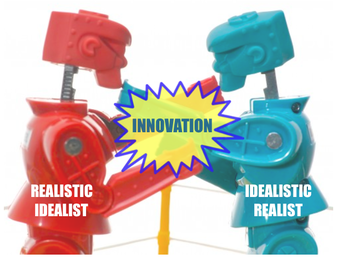 I was at a meeting recently where attendees were discussing innovation and how and where - and even whether - it should happen in large organizations. To innovate or not to innovate… As sides made their cases for and against, I offered a comment to the group that while we appeared to be presenting contradictory positions we actually agreed on the problems large organizations face in innovating. And, there wasn’t really any disagreement about whether they needed to. The difference in perspective was that one group saw the problems preventing innovation in large organizations as too big and too entrenched to solve and the other group thought they presented the perfect opportunity. In response to my assessment, someone commented: “Yeah, this group is the realists and that group is the idealists.” Everyone seemed to agree. And, I guess I didn’t immediately disagree, but it seemed way too simple, and it bothered me for some reason. For starters, I don’t like being put into an idealist box - which of course is where I was - simply because I believe human-created problems are solvable by humans. But, I let it go, and just started furiously taking notes on my phone about all the ways I felt that this seemingly simple comment presented a patently unhelpful view of innovation, organizations, and the world. Why do we attribute realism to the point-of-view that things cannot, will not, and perhaps even should not change? Why is that realistic in today’s world? Why do we attribute idealism - as the counter to realism - to people who believe things can and should change? In today’s world, isn’t that a lot more realistic? Isn’t it realism to know that change is inevitable? That innovation is necessary to keep learning, stay competitive, and to keep up with customers and markets? Is it really idealism to try and predict, invest in, and prepare for not just reacting to but leading that inevitable change? An idealist should be more than a dreamer, and idealism should never just be an excuse to pretend difficult problems are any less complex than they really are - or to deny that their solutions should be grounded in reality. Alternately, a realist shouldn’t passively accept that the current state is inevitable, and realism should never just be an excuse to lie prostrate in the face of difficult problems because, well, that’s just the way it is. Innovation is messy work and organizations are messy places. The most innovative organizations need idealistic realists mixing it up every day with realistic idealists. Anything that makes the people or the process sound any simpler may make innovation easier to talk about but can also make it a lot more difficult to achieve. 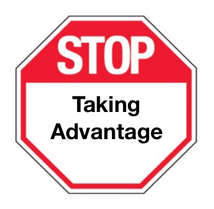 In my last blog "Stop doing your part", I focused on building a do-what-it takes team. But, consider this the appended warning to that blog: you can’t just ask people to do what it takes as an excuse for not investing sufficiently in your strategy or improving your own leadership. So, as much as we want the do-what-it-takes attitude and we understand and celebrate the successes that such an attitude can generate, we need to check ourselves to make sure we aren’t burning people out. Just because one of our people can step up and do extraordinary work in a difficult situation doesn’t mean we should allow that situation to persist - or chronically resurface. Their extraordinary work should not become the ordinary expectation. Extraordinary individual effort is no more sustainable for driving successful teams over time than the do-my-part mentality that I discussed in the last blog. It leads to burnout and pushes our do-what-it-takes people to feel they are just being taken advantage of. It doesn’t take long for people to realize when they get recognized for doing great work simply by getting more work. So, we must think critically about why we find ourselves in situations that require extraordinary effort from our people. Is it strategy? Resourcing? Skills/team/work mismatches? Unreasonable expectations? Or, is our leadership perhaps fomenting unnecessarily harried working conditions? It is probably some of all of these as they tend to be interrelated. So, let’s celebrate our people for doing what it takes but build teams and organizations that aren’t always pushing them to the limit. 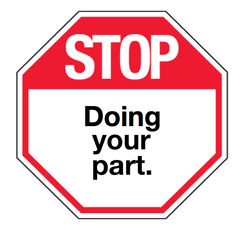 And start doing what it takes. Teams are complex social systems with emergent dynamics among members and emergent contexts in which they operate. This is true of small teams and only more so as teams grow. If people merely do their part, they are actually complicating things, forming a complicated system; and complicated systems are to complex work what the assembly line is to internet security. In dynamic and growth-oriented work environments, your “part” is always emerging, so as soon as you start just doing it then you probably aren’t fully doing it anymore. While you may be a high performer and may be surrounded by high performers, no mere collection of individual contributors will ever manifest in a sustainable, high-performing team doing complex work. A set of powerful parts will not inevitably make a powerful whole. In fact, the opposite is more likely true: the more powerful and simultaneously partitioned the individual contributors the less likely you are to build a powerful team that bridges them. The strength of the individual contributor mindset is too strong; the rationalization of the do-my-part mentality feeds itself and invites others to just do their part as well. As a result, as do-my-part teams grow, they become increasingly less adaptive and less effective in responding to the emergent dynamics within and around them. So, how do we build more complex teams and avoid complicated ones? How do we inspire more people to do what it takes? Hire for where you are going, not just where you are. We often think about hiring for “fit” with our team and/or organization. While this may seem to make sense in the immediate term, we should understand that “fit” is a temporary construct that belies the change inherent in a growth strategy. So, fit today could easily not fit the future. Consequently, we should hire and invest in people who will help us deliver and define an emergent future. We need team players and learners who will not just do the work but will help create and define it. Communicate the vision. If our people at all levels are going to do what it takes to define our collective future, they must be organized around and feel a sense of ownership of some collective vision. They should also understand (and it should be true) that they are helping define how that vision evolves as the team and market context also evolve. Team leaders need to communicate and actively invite input on the vision not merely to try to get our people aligned around it but to more quickly identify the people who don’t, and perhaps won’t ever, own it. Promote creative tension. I have written about creative tension in both of my books as I continue to try and flesh out my thinking on team power dynamics. For this blog, I’ll just share below the core components of relational tension and illustrate how they differ in environments of creative versus destructive tension.  We all know the story about change: it’s the only constant, it’s happening faster than ever, if we don’t like it then we will like being obsolete even less. It’s all true. But, most of us and most of our companies haven’t really internalized the implications. If any of these thoughts on change are to be meaningful, we best change the way we approach this not-so-new world order, not merely acknowledge that it exists. We have to change ourselves. I was working with a company recently that operates call centers to provide direct support to their customers. As we talked about growth and change in their company more broadly, we explored if and how they were, or could be, learning from these front-line employees. What were they hearing directly from customers that the company really needed to understand? We’ve all heard the saying about the importance of having “an ear to the ground” so we can sense imminent changes in our work environments and markets. Who has their ears to the ground more than those meeting our customers where they are? Dealing with their problems? Frustrations? Too many of our people on the front-lines think they don't have the power or position to speak up in our organizations and don’t have the ability to create change in their own work. As a result, many of us are missing a huge opportunity to become more resilient, adaptable, and creative organizations. When we don’t listen to our customers and the employees who interface directly with them, we run the risk of missing indicators of emergent change in our markets, products, and even broader society that can lead our products, services and companies toward their next iteration. Through our discussion, this company realized that their listening to front-line employees was spottier than they would like - that the value of listening to employees was more ad hoc and leader-by-leader than a consistent, strategic value of the firm. The implications from this discussion and this kind of organizational self-awareness are pretty vast. How do we as an organization demonstrate listening as a value? How do we train our people and set management expectations? How do we hire and promote our people to support such a strategic value? How do we intentionally recognize good listening as good leadership? How do we openly celebrate the knowledge that our people at all levels are stepping up and sharing with us? People at all levels of our companies need formal and informal outlets to provide feedback, ask questions, and share ideas for solutions. This is just strategically smart. It’s not merely about being nice to our employees. Not only will listening to our employees make our company more resilient and adaptive, it will also make for happier employees and better products and services. When they know their ideas and insights are respected (even if not always acted upon), our people will more actively identify customer patterns and frequent issues that we may never see, and solve them in ways we may never have thought of. They will own their work. So, instilling a culture of listening that is supported by training, accountability, and processes up and down our organization is paramount to leading emergent change –the change we otherwise may not see coming. image: http://www.yourthoughtpartner.com/blog/bid/73770/the-8-steps-to-active-listening |
Categories
All
Archives
April 2024
|




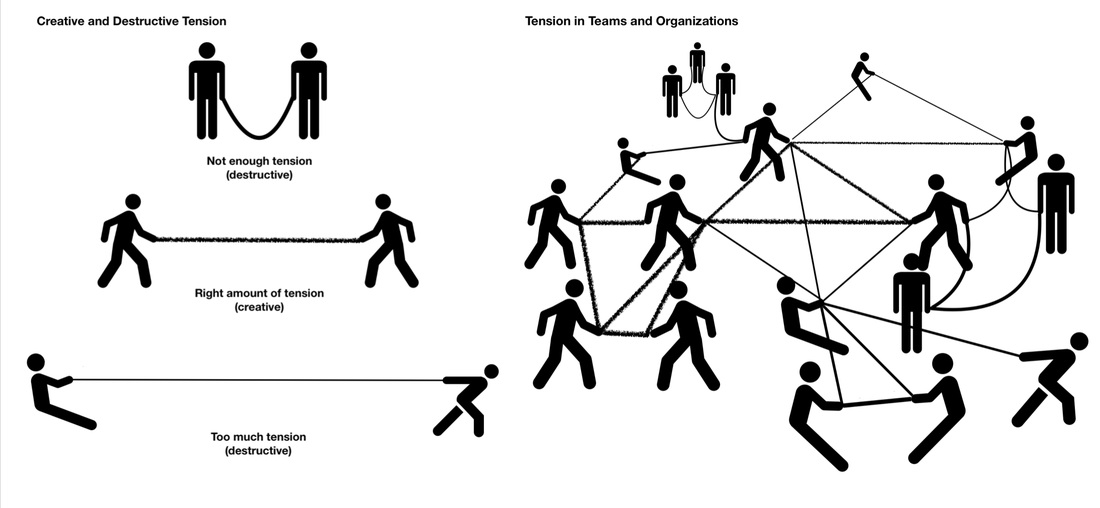
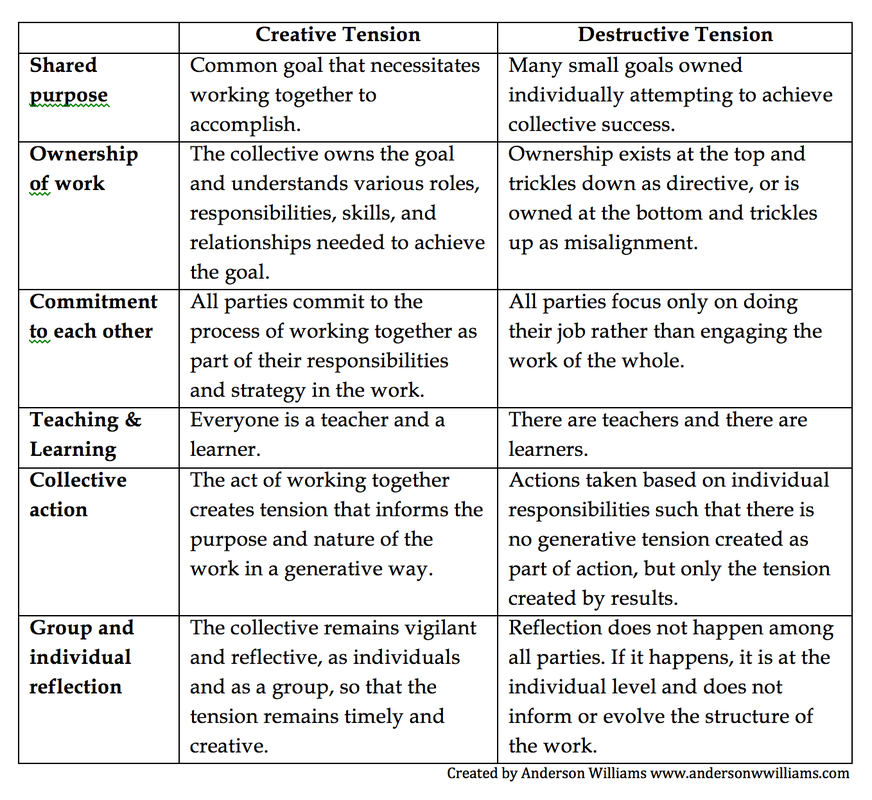
 RSS Feed
RSS Feed